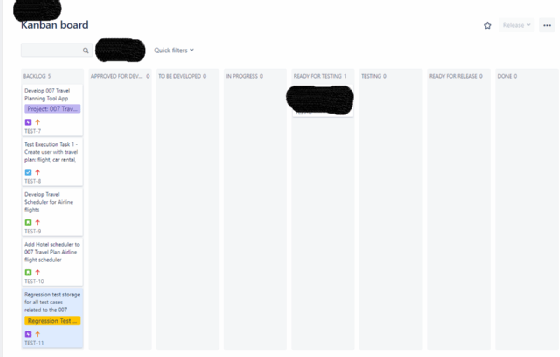
Jumbo2010 - Fotolia
How to use Jira as a test management tool
While Atlassian Jira is a common tool to manage software projects, Amy Reichert's team uses it to manage tests. She details snags you might encounter with test cases and management.
Many IT organizations try to streamline the number of tools they use, as more options make for more management difficulties. For that reason, they seek tools that work across groups, such as dev and test. Organizations can use Atlassian Jira as a test management tool and eliminate the need for an additional product.
While Atlassian didn't design Jira as a test management tool, the product contains many native features. It can be an especially helpful tool to develop, track and maintain test cases. Plus, add-on options via the Atlassian Marketplace help fulfill additional QA needs.
However, challenges come with using Jira as a test management tool. Navigate through these five areas to learn how to use Jira for testing, which includes epics, labels, archives and other features to organize QA projects.
Product requirements
First, you'll need a place to create and update product requirements, which serve as the basis for quality applications and, therefore, guide tests. Regardless of the development methodology, organizations must document desired outcomes for software.
You could opt to create requirements within the description of each story and then document all changes within a single story. However, you will need to remember the story number to refer back to the documented requirements, which can be cumbersome and introduce potential for human error.
Add Jira to your arsenal
Testers will experience a learning curve when they adopt Jira. Start with the common terminology laid out in these areas of test management:
- Story: A story encapsulates the smallest possible unit of work in a project.
- Epic: The epic comprises interrelated stories for a common project.
- Task: Like a story, a task is a unit of work done on a project. Teams must decide how to divide up work and assign it out.
- Label: Jira users apply labels to issues, such as stories and tasks. These labels enable categorization and can enhance the effectiveness of searches.
- Component: Components help organize project work in Jira. Teams can assign a user to be the lead on a component and record details about the project.
- Board: The board provides a visual overview of one or more projects. For example, a test team can put the epic for a project on the board, with all of the stories for that epic. Advanced users might customize boards and include multiple boards for a single project.
For each project, you could create a key that lists the stories that contain its business requirements. For example, use the epic work item in Jira, and store all product requirements on the epic. Then, as you create and link stories to the epic, they will forever link to the base requirements documentation. The requirements can copy over to each linked story, or they can be referenced by story number within the epic.
It's too cumbersome to look up story after story to find requirements. It's more convenient for team members to keep your requirements contained on a single epic if you use Jira as a test management tool.
Test case development
You could opt to treat test case development similarly to requirements with an epic. You can develop test cases on the epic or on individual stories. Put an outline of the planned test verification on the epic. Then, link specific tests to the individual work tests where the detailed steps reside. Use the outline and individual test cases to create system tests.

Write out test cases with the Jira story editor, a native feature that enables you to add formatted text and include a variety of attachments. Basically, the Jira editor has everything you need to write a solid manual test case.
Track test cases, execution
After you detail test cases and requirements, you can track the execution results. One method is to create Jira tasks within the bug or story so that they are automatically linked. Add a summary title that starts with Test or another term that identifies it as a test case to development team members. Assign the task to a QA lead, team member or even generic QA user.
Alternatively, use Jira's Labels or Components fields to identify test case tasks. Both are visible on the Jira board views and are easy to locate. The task description can include the test case objective, steps and expected results. Automatic links to the bug or story mean that the test case remains attached to the story indefinitely.
Traceability
All work products in Jira are traceable: enhancements, bugs, tasks and epics. Traceability is important when you must pass regulatory standards or when you want to ensure the software development process is followed. Additionally, traceability helps you find documentation, test cases or information on a particular work product quickly. When you use Jira for test management, you can use traceability to map test cases to each requirement, but it is useful across the entire software development cycle.
Jira enables users to link work products together, but it's more difficult to find them after the main story or epic is done and removed from the board view. You can search the archive, find completed work and then go through each link to find the object you need. As you've probably experienced with other tools, that is a time-consuming process.
If you map test cases in an epic, the test epic could become the traceability epic as well. With this setup, you can link all work items in the epic via the test cases and prove traceability across the full development cycle.
Test case storage, maintenance
You have two choices to store and maintain test cases for execution. You can continuously create new test cases on each work item, with the latest design change becoming the master. Or, if you link back to the original work item, you can either store all the test task stories in a separate column or archive them to make them searchable.
Teams derive test cases from product documentation. It's a waste to simply trash these valuable documents when each story is completed on the board. Figure out a way to archive test cases to make them easy to find and maintain.

You could create a matrix with a skeletal outline of story numbers that hold significant or high-priority tests that must be retained. Perhaps either an epic or task could link and prioritize test cases. Your work item of choice will hold the test cases in a central, easily accessible location. The work item remains in an in-progress state in the board column of your choosing and would never be marked as completed or done.





